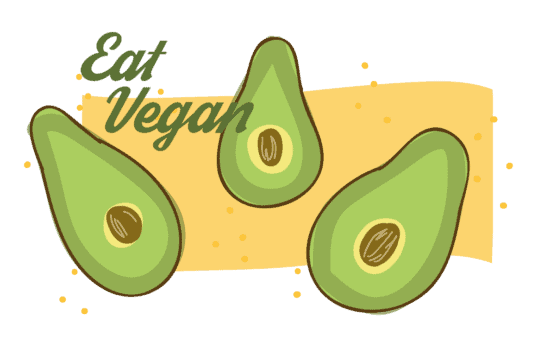Some people can’t even imagine cutting meat out of their lives — and I used to be one of those people. However, three months ago I started my journey as a vegetarian, and I haven’t looked back. Almost immediately, I started to feel healthier, I had more energy, and I enjoyed my food more, because it felt like it was nourishing me rather than weighing me down.
After being vegetarian for a few months, I started to research how to become a vegan. Although I am not fully vegan at this point, I plan to continue the transition over the next couple of months. Here are a few tips that I have picked up along the way.
The first thing I learned is that dates are amazing — you can make almost any baked goods vegan by replacing the eggs and butter with dates. You can even make a cinnamon sauce that tastes just  as unhealthy as the non-vegan option with just dates, cinnamon and water.
as unhealthy as the non-vegan option with just dates, cinnamon and water.
Let’s talk salads — if you eat the same one everyday, of course it’ll get boring, but not if you try switching it up! I like to change my salads up and experiment with making new dressings. My favourite salad dressing recipe so far is raw tahini, coconut aminos, apple cider vinegar and water. You can add different spices to give it a new flavour every day.
You will often hear that it is important to get enough protein on a vegan diet, but guess what — many plant-based foods are extremely high in protein. Foods like spinach, chickpeas, beans and kale are all high in protein and things I like to eat everyday. There is also a variety of vegan protein powders that are great to put in smoothies, which is how I start my day each morning.
It’s extremely helpful to have a good blender if you are considering going vegan. You can make smoothies, sauces, salad dressings, hummus and so many other staples of a vegan diet with a good blender. I recommend a Ninja blender, which is what I use to mix up my meals — you can buy a basic model for around $50 to $150, depending on which model you purchase.
Just like non-vegans, you need to get your greens in! It is so important for you to give your body all of the nutrients that it needs, which is why you need to make sure that you get enough greens throughout the day.
What I like to do is mix spinach into my smoothies. If you put strong flavoured fruits like bananas, strawberries or kiwis into it, you don’t even taste the spinach at all. You can put anywhere from a handful of greens to four packed cups into each smoothie.
There are so many good vegan recipes online — you just need to know where to look for them. I like to find new recipes on YouTube, where there are many helpful vegan channels for exactly this purpose. Some of my favourites are FullyRawKristina and NaturallyStephanie.
For students working through term papers and finals, there is still plenty of great vegan junk food to binge on during long study sessions. Most potato chips are vegan, as well as air-popped popcorn and pure dark chocolate, which are some of my favourites.
There is also a good variety of vegan meat replacements, like meatless hot dogs or chicken nuggets, available at most grocery stores.
Many people think that being vegan is more expensive than being a meat eater, which can be true for some, but there are a lot of ways to cut costs for vegan foods. It is worth doing some research on how to be a vegan on a budget, because there are some foods — like potatoes, oatmeal and rice — that can provide a good base to your diet at very little cost.
The transition to becoming vegan doesn’t need to happen overnight. Although there are some people who find it easy to transition overnight, sometimes it is better to take baby steps.
In the end, if it’s done right, I find that adopting a vegan diet not only makes you feel better physically but also emotionally — it feels good to know that you aren’t harming animals with the food you choose to eat.
—
Lyndsay Afseth
Graphic: Lesia Karalash / Graphics Editor